Just imagine a world where you never have to charge your phone again. That’s the future we are working towards with solar-powered phones.
We can create phones that never lose their charge by harnessing the sun’s power. But are we close to making this a reality?
This guide will explore everything you need to know about solar-powered phones. Let’s get started!
The History of Solar-Powered Smartphones
2009 – The Solar Guru / Blue Earth
Solar Guru was the first solar-powered smartphone on the market. Released by Samsung in 2009, this handset used a small solar panel to keep its battery topped up.
While it was a novel concept, the Solar Guru was not a particularly popular phone and is now largely forgotten.
Samsung later released another solar-powered device called the Blue Earth. They marketed it as an eco-friendly product and made it available in a wider range of markets, including the UK. However, they withdrew it shortly after its launch.
2010 – The Puma Phone
The Puma Phone was a fitness-focused handset that Puma released in 2010. Like the Solar Guru, it used a solar panel to keep its battery charged.
However, the Puma Phone had other unique features, such as a pedometer and heart rate monitor. While it was popular with fitness enthusiasts, the Puma Phone didn’t make much of a splash with mainstream consumers.
2012 – Nokia’s Experiments
In 2012, Nokia documented some of its challenges while testing solar-powered phones.
One issue was the limited size of a phone’s back cover, which restricted how much you could charge the battery.
Due to these technical limitations, Nokia eventually abandoned its plans to release a solar-powered phone.
Present Days – Kyocera’s prototypes
Kyocera and Sunpartner Technologies have been working on prototypes of solar-charging phones for the past years, with their latest model promising one minute of talk time after three minutes in sunlight.
These prototypes are still in development, and the manufacturers are yet to announce any plans to release a commercial product.
Why We Don’t Have Solar-Powered Phones Yet
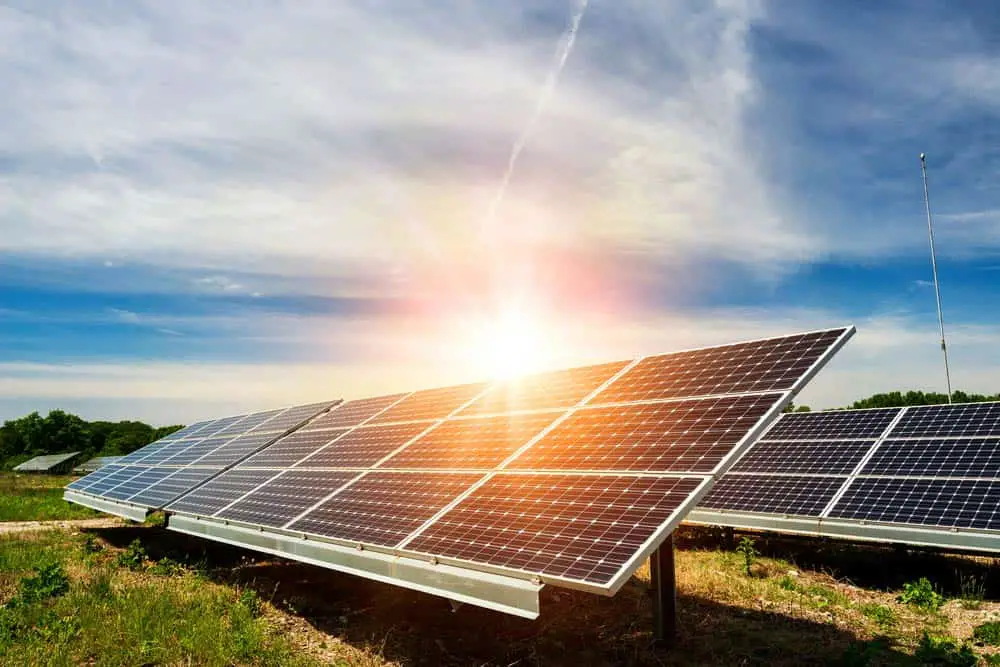
A solar panel under sunlight
Inconsistent Sunlight
One of the biggest problems with solar-powered phones is their reliance on the sun to work. However, the sun is an unreliable power source because it is not always shining.
Even on a bright, sunny day, there may be times when clouds or buildings obscure the sun. This drawback means that the solar panel will not be able to generate enough power to keep the phone charged.
Not only that, but most of the time, you keep your phone in your pocket, purse, or backpack, which limits the amount of sunlight.
Not Enough Power
Another problem is that the solar panels do not generate enough power to charge the phone.
If you use your phone frequently throughout the day, you will have to charge it using a traditional electrical outlet at some point.
Solar-powered phones would not be acceptable even for people who use them sparingly! Nobody wants the phone to die after only a few minutes of use.
Practical Size Issues
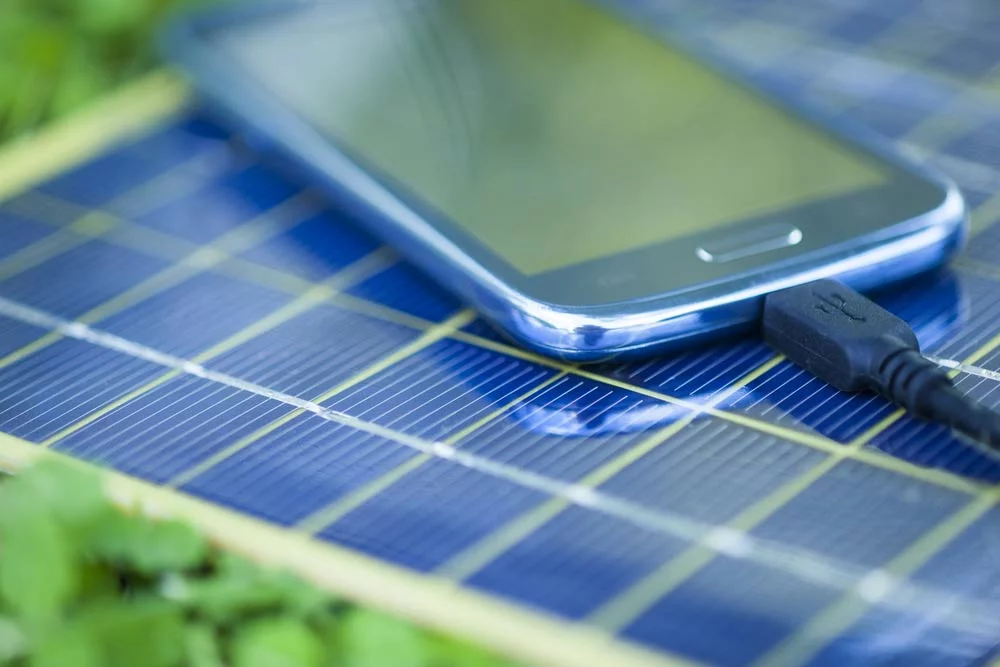
Solar Mobile Phone Chargers
Solar cells are too big to fit into a phone in a way that would not be bulky and impractical.
The average solar panel that operates the same way solar-powered phones do is about the size of a sheet of paper, which is far too large to fit on the phone.
Even if you could find a way to make the solar panel smaller, it would still be too heavy and would make the phone difficult to carry around.
However, manufacturers are working on this problem and trying to make progress in terms of size and weight.
Not Yet Mainstream Enough
Solar-powered phones still need to be mainstream enough to warrant mass production. Few people know about or are even interested in them, meaning there needs to be more demand for solar-powered phones to justify the production costs.
In addition, solar-powered phones are still relatively new, and manufacturers are still working out the kinks. Until solar-powered phones are more popular and refined, they will likely remain a niche product.
However, there are some countries in the US and other parts of the world where solar energy is quite popular. This sign indicates that solar-powered phones may eventually become more mainstream.
Advantages of Solar-Powered Phones
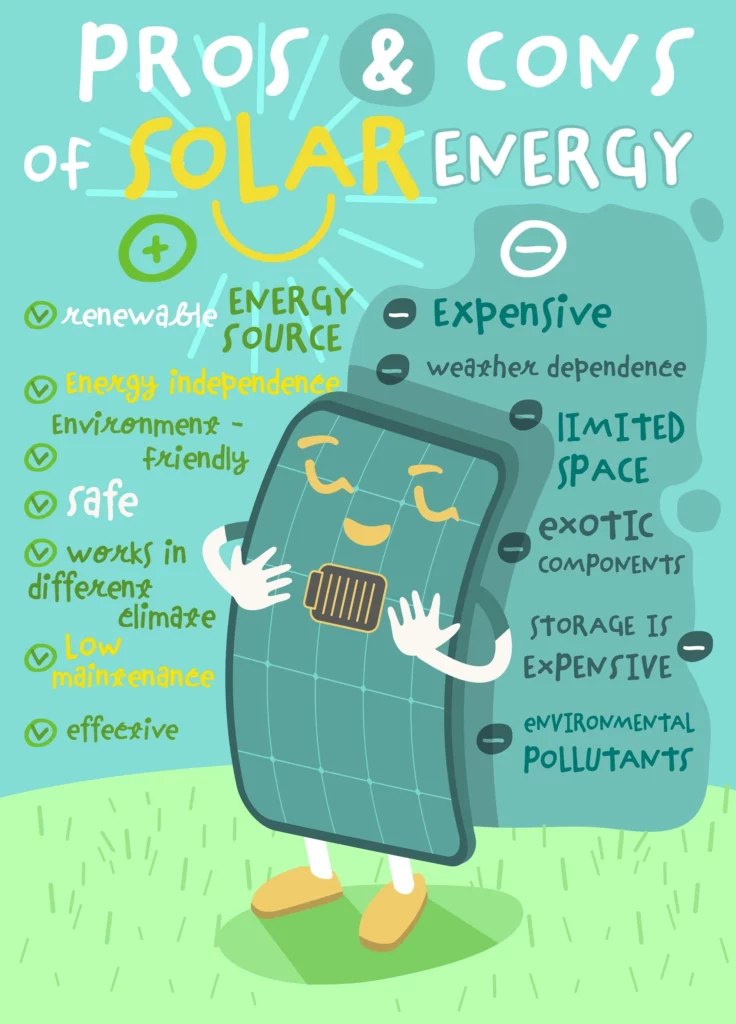
Pros and cons of solar energy.
Always Close to a Power Source
Solar-powered phones have the advantage of always being close to a power source. Your phone won’t run out of battery as long as there is daylight.
Environmentally Friendly
Solar-Powered Phones have no environmental impact because they do not tap into the power grid. Solar-powered phones rely on renewable energy, which is much better for the environment than traditional methods of generating electricity.
It is cheaper in the Long Run.
Solar-powered phones are cheaper in the long run because you would not waste money on your energy bill.
The initial cost of a solar-powered phone may be higher, but over time you will save money because you will not have to pay for electricity to charge your phone.
Not Susceptible to Power Outages
They are also not susceptible to power outages. If there is a power outage, your solar-powered phone will still work because it does not rely on the grid for power.
Best Solar-Powered Phone Chargers
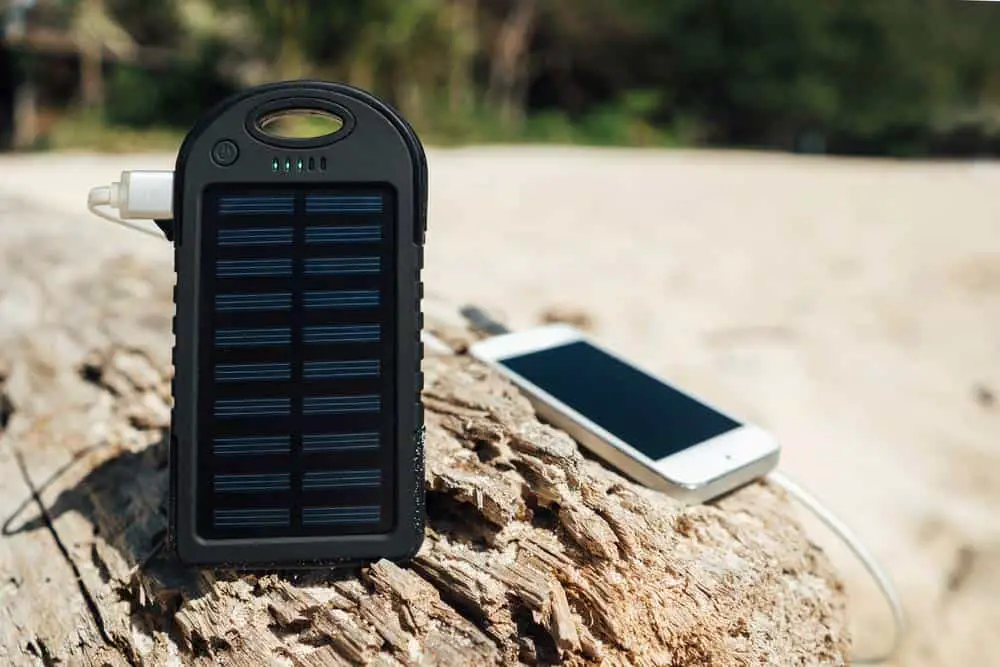
Battery solar energy device
BigBlue 28W Solar Charger
The BigBlue 28W Solar Charger is a powerful and efficient solar charger that you can use to charge most Android and Apple devices.
The surface is weatherproof, and the polymer material ensures your device stays safe while charging.
The solar panel has a power conversion efficiency, so you can rest assured that you will charge your device quickly.
The charger also includes four carabiners for easy clipping, and you can fold it to the desired length.
BEARTWO Solar Power Bank
The BEARTWO Solar Power Bank is an excellent choice for those who want a solar charger that you can use in all situations.
This waterproof solar charger includes a built-in LED flashlight, a micro USB charging cable, and a carabiner, and you can charge it with (AC) or solar power.
With its 24,000mAh power bank, this solar charger is perfect for extended camping trips or emergencies when you need extra power output.
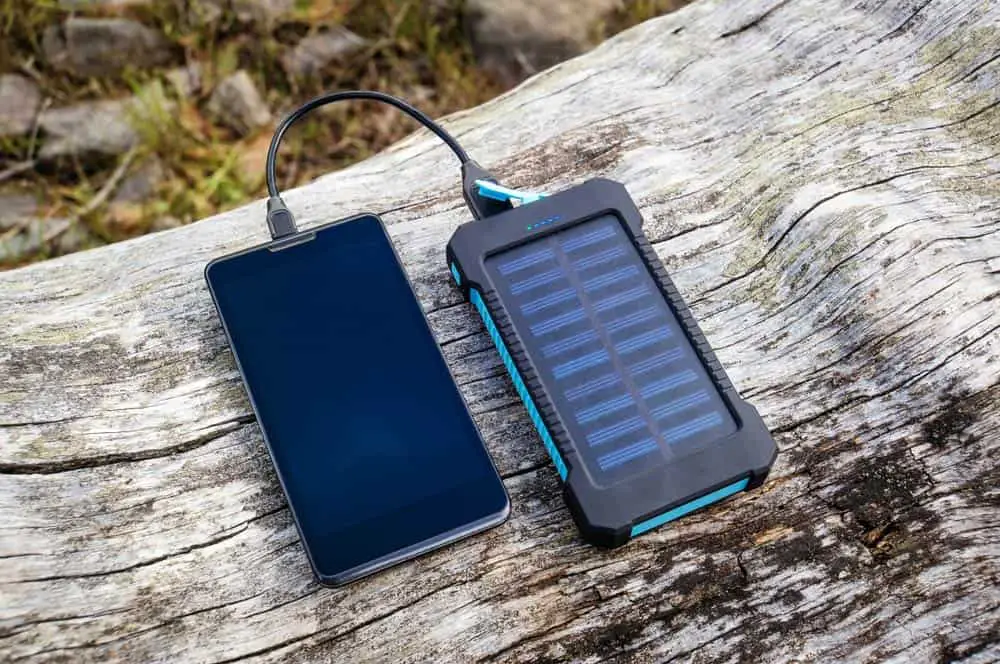
Smartphone charging with solar battery
X-Dragon 40W Solar Charger
The X-Dragon 40W Solar Charger is perfect for trips where you need to charge multiple devices. It features two 5.0-volt USB ports and one 18.0-volt DC port, as well as PET solar panels and weather-resistant Oxford fabric.
Plus, it’s structured with class-A temperature-resistant anticorrosive fabric to withstand any conditions.
This charger also comes with three carabiners, one USB cable, and five computer connectors.
BLAVOR 18W Solar Charger
This lightweight charger has four foldable solar panels making it easy to charge on the go, and the 18.0-watt charging bank can provide multiple charges for your devices.
The built-in 3.0-watt light and compass are also handy features, making this an excellent choice for camping or outdoor adventures.
Some customers say it takes a lot to charge in direct sunlight; however, this is the standard because of its large capacity.
Hickey 25000mAh Solar Charger
The Hickey 25000mAh Charger is perfect for on-the-go use.
The built-in battery (25,000mAh lithium polymer) guarantees 8.5 full charges for your phone batteries.
Hickey has four foldable solar panels that make it easy to charge the device in any setting, and the included micro USB cable makes it compatible with most mobile phones.
It also has a built-in flashlight that makes it easy to see in dark or dimly lit areas. Finally, the easy-to-hang hook ensures you can keep your hands free while charging your devices.
The Future of Solar-Powered Phones
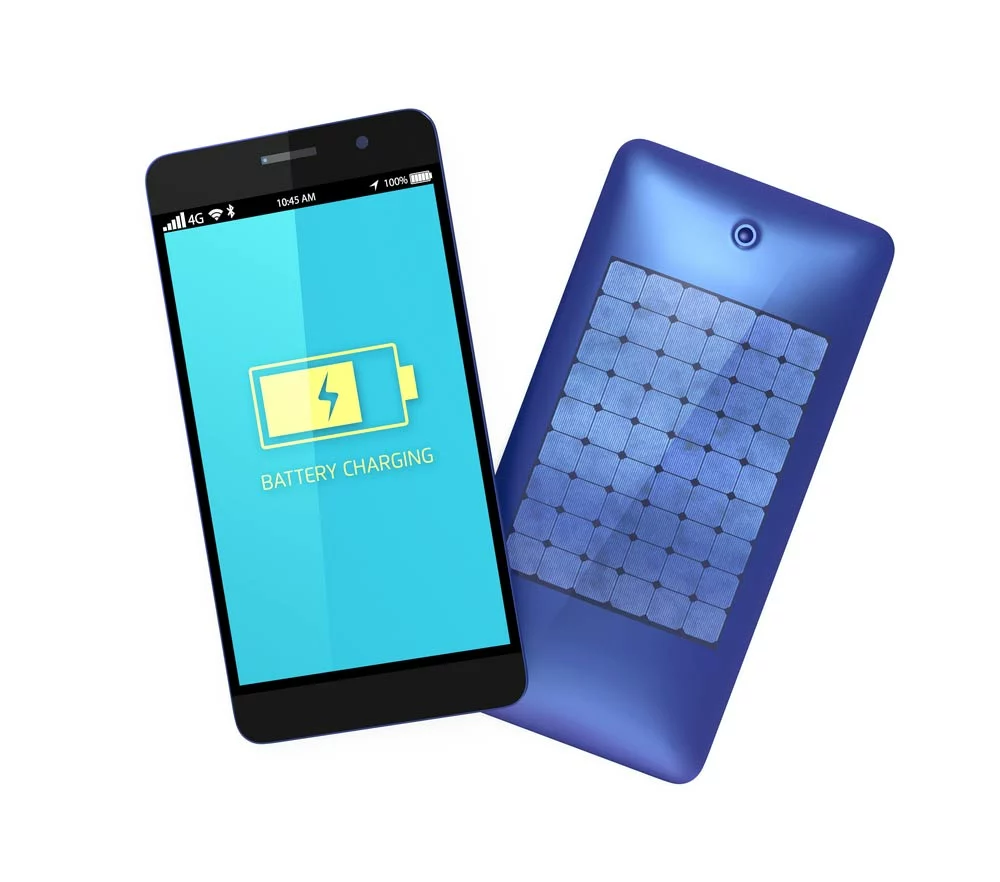
Charging smartphone with built-in solar panel
The future of solar-powered phones is uncertain. They have several advantages but also a few drawbacks that affect their popularity.
Solar-powered phones are not as widely used as traditional ones, but that could change. The fact that science is always in progress gives us hope that one-day solar-powered phones may be the norm.
Conclusion
Solar-powered phones have not proved any competition with conventional battery-operated phones for various reasons such as high cost, less efficiency, and shorter battery life.
However, with the advancement of technology, solar-powered phones may one day make it to the mainstream market.
We hope you found this guide helpful. If you have any questions, please feel free to leave a comment. Thanks for reading!
